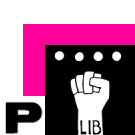User:Kim/reading/A Reflective Conversation with Materials: Difference between revisions
(Created page with "'''Reflective Conversation with Materials: An interview with Donald Schön by JohnBennett''' <br> in 'Bringing Design to Software' by Terry Winograd, 1996 three paradigms for practice by Donald Schön: # '''Reflection in Action''' = closely tied to experience of surprise ## ...while in the process evolve the way of doing it. (doing /) playing while on occasion noting and responding # '''Stop and Think''' (practictioner pauses to reflect, takes distance) # '''Reflection...") |
No edit summary |
||
| Line 5: | Line 5: | ||
# '''Reflection in Action''' = closely tied to experience of surprise | # '''Reflection in Action''' = closely tied to experience of surprise | ||
## ...while in the process evolve the way of doing it. (doing /) playing while on occasion noting and responding | ## ...while in the process evolve the way of doing it. (doing /) playing while on occasion noting and responding | ||
# '''Stop and Think''' ( | # '''Stop and Think''' (practitioner pauses to reflect, takes distance) | ||
# '''Reflection on practice''' is a more meta reflection on practice, habits and repetitive experiences | # '''Reflection on practice''' is a more meta reflection on practice, habits and repetitive experiences | ||
* importance of unpredictability in design: emphasizes that there is no direct path between designers intention and outcome (how something is used/ perceived) | |||
<blockquote> | |||
As you work a problem, you are continually in the process of developing a path into it,forming new appreciations and understandings as you make new moves. | |||
</blockquote> | |||
* on '''conversation with the materials''' designers judgements can have the '''intimacy of a conversational relationship''' | |||
** receiving response from the medium | |||
* inventions made through conversation with the users (example 3M tape) and how they use product | |||
* "A good designer strives to make the details work so well that they become invisible to the user." I dont think so – this means | |||
# hiding away key aspects of an object or product | |||
# allowing for hints to the user how the object works and give different entries to it | |||
* '''Objects failure or difficulty in use''' "makes visible its insides (how it is made, of what it is made)" | |||
* ''' tacitness''' (Michael Polanyi, 1966) | |||
Revision as of 07:34, 17 March 2025
Reflective Conversation with Materials: An interview with Donald Schön by JohnBennett
in 'Bringing Design to Software' by Terry Winograd, 1996
three paradigms for practice by Donald Schön:
- Reflection in Action = closely tied to experience of surprise
- ...while in the process evolve the way of doing it. (doing /) playing while on occasion noting and responding
- Stop and Think (practitioner pauses to reflect, takes distance)
- Reflection on practice is a more meta reflection on practice, habits and repetitive experiences
- importance of unpredictability in design: emphasizes that there is no direct path between designers intention and outcome (how something is used/ perceived)
As you work a problem, you are continually in the process of developing a path into it,forming new appreciations and understandings as you make new moves.
- on conversation with the materials designers judgements can have the intimacy of a conversational relationship
- receiving response from the medium
- inventions made through conversation with the users (example 3M tape) and how they use product
- "A good designer strives to make the details work so well that they become invisible to the user." I dont think so – this means
- hiding away key aspects of an object or product
- allowing for hints to the user how the object works and give different entries to it
- Objects failure or difficulty in use "makes visible its insides (how it is made, of what it is made)"
- tacitness (Michael Polanyi, 1966)
